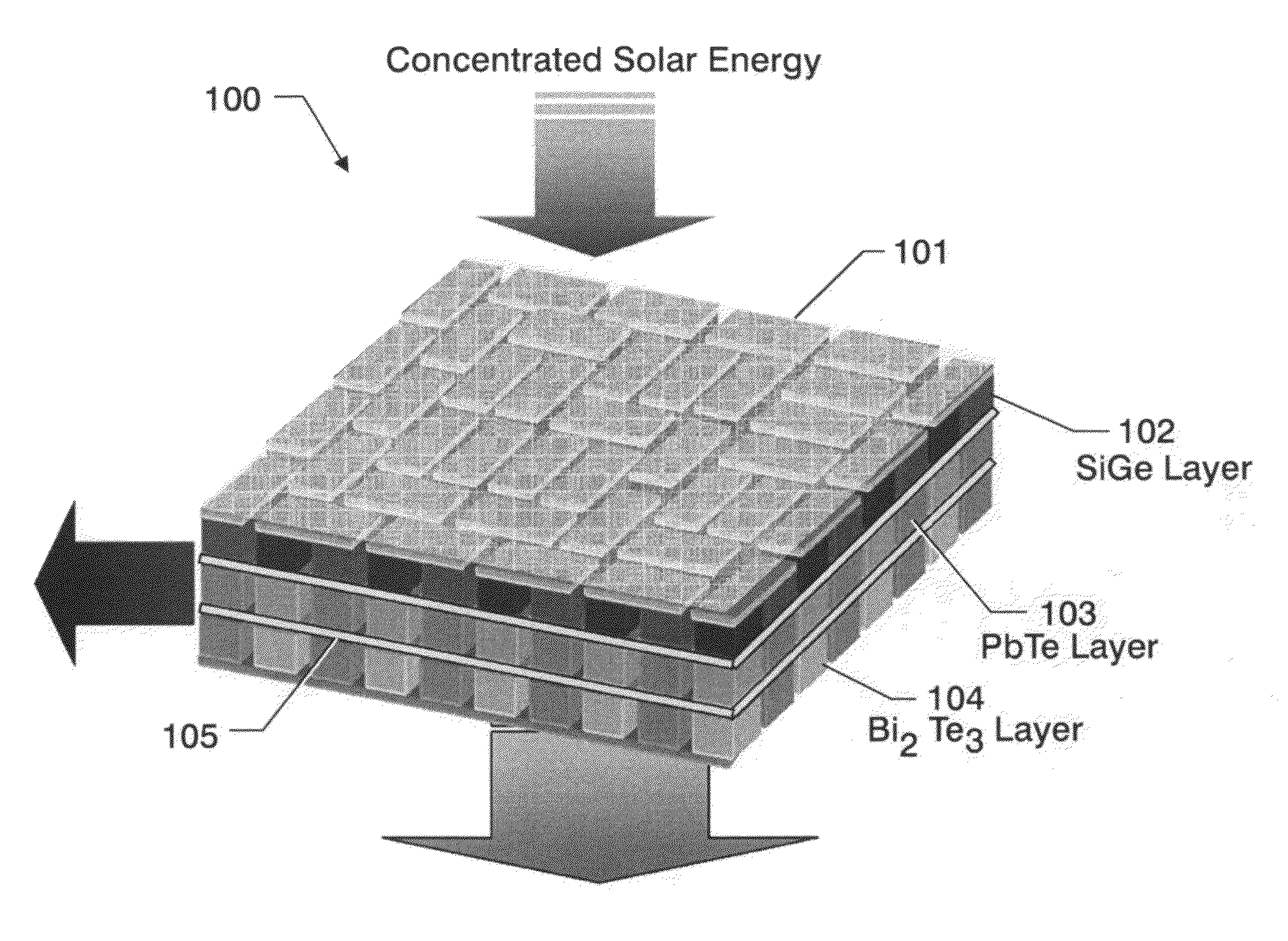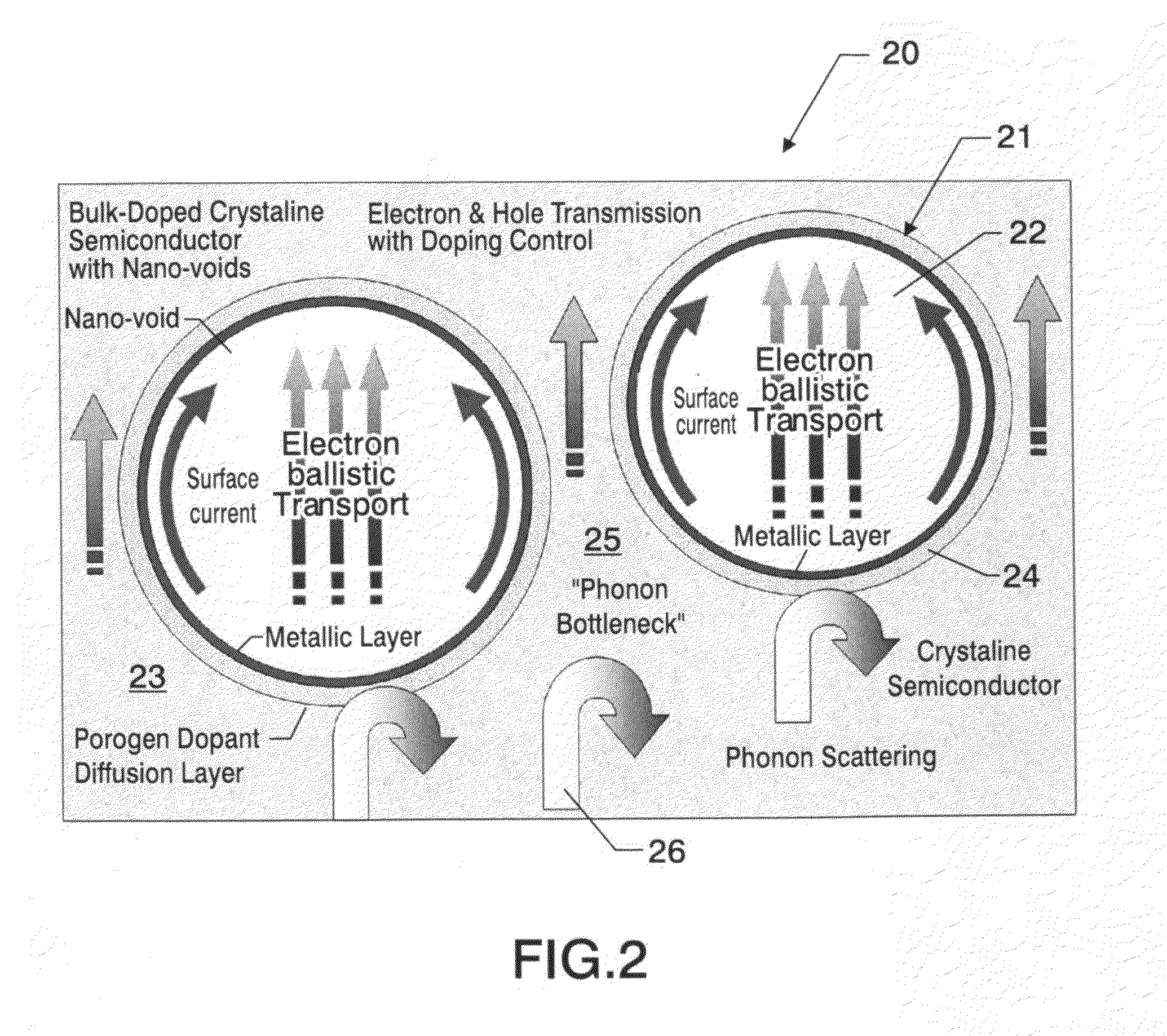Fabrication of Nanovoid-Imbedded Bismuth Telluride with low dimensional system
a technology of nanovoids and bismuth telluride, which is applied in the direction of rigid airships, transportation and packaging, aircraft, etc., can solve the problems of poor electron mobility, lower electrical conductivity, and lower thermoelectric performance, and achieve the effect of reducing thermal conductivity and increasing electrical conductivity
- Summary
- Abstract
- Description
- Claims
- Application Information
AI Technical Summary
Benefits of technology
Problems solved by technology
Method used
Image
Examples
Embodiment Construction
should be read together with the accompanying drawings, wherein:
[0017]FIG. 1 is a graph depicting the History of Thermoelectric Figure of Merit (ZT);
[0018]FIG. 2 is an illustration of a morphological design of an advanced thermoelectric material to enhance the ZT by increasing electrical conductivity while concurrently reducing thermal conductivity by populating nanovoids into the material, which material can be utilized in at least one embodiment of the present invention;
[0019]FIG. 3 is a graph of the figure of merit of several TE materials which could be utilized in at least one embodiment of the present invention;
[0020]FIG. 4 is a flow chart of the fabrication of a nanovoid bismuth telluride (Bi—Te) thermoelectric material that could be utilized in at least one embodiment of the present invention;
[0021]FIG. 5 is a diagram depicting a portion of the fabrication process of the Bi—Te thermoelectric material referenced in FIG. 4, i.e., the formation of low-dimensional bismuth telluri...
PUM
 Login to View More
Login to View More Abstract
Description
Claims
Application Information
 Login to View More
Login to View More - R&D
- Intellectual Property
- Life Sciences
- Materials
- Tech Scout
- Unparalleled Data Quality
- Higher Quality Content
- 60% Fewer Hallucinations
Browse by: Latest US Patents, China's latest patents, Technical Efficacy Thesaurus, Application Domain, Technology Topic, Popular Technical Reports.
© 2025 PatSnap. All rights reserved.Legal|Privacy policy|Modern Slavery Act Transparency Statement|Sitemap|About US| Contact US: help@patsnap.com



